Extrapolations of the Su Wen
Chapter 2
On conforming with the
Energy of the Seasons
Extrapolations of the Su Wen
Chapter 2
On conforming with the
Energy of the Seasons
✍️Wendy Brown, Lic. Ac.
As a microcosm of the rhythms and fluctuations of the seasons and their elemental factors to which we are inextricably linked, Chinese medicine would consider the result of our health in one season as being a marker of our lifestyle preparations in the previous seasons as well as in the present. With regard to colds and flus, the ability of the immune system to resist external pathogens, be they bacterial, viral, or allergen toxins that result in immune suppression that leaves us ailing and struggling to recover, exists in the strength of ‘Wei Qi.’

A patient texted me asking how my flu kung fu is: i.e. my thoughts on flu shots. I put together the following from the TCM perspective to share in response. Collage by W.Brown, Lic. Ac.
In Chinese medical theory, Wei Qi is fierce, useful, combative energy from nutrition, says the Lingshu, a medical text compiled in the 1st century BCE, one of two parts of a larger work known as the Huangdi Neijing, the Yellow Emporer’s Divine Classic. Wei Qi is lively and agitated and circulates in superficial tissues, skin, connective tissue, muscles and peritoneum. It radiates to the chest and abdomen. According to the classics, it does not circulate through the meridians but rather flows through the face, trunk, and limbs during the day, and at night through the viscera. Wei Qi protects the body from external perverse energies by opening and closing pores and warming connective tissues. It concentrates at the sites of acupuncture points, the “Holes of Qi,” per se. Wei Qi represents the whole immune system, from leukocytes to anti-bodies, histamine, bradykinin and serotonin.
In Chinese medicine it is an intrinsic reference to discuss “wind gates” and “wind invasion or wind penetration.” The neck, sides of the head, forehead, and upper back according to TCM are conduits whereby externally contracted pathogenic wind can gain entry to the body. Fierce Wei Qi is the primary way the body resists an invasion. Nutritional status, inadequate rest, excessive consumption of alcohol, among other lifestyle factors may lead to the impairment of Wei Qi. It is always advisable to adequately keep wind gates covered, interestingly, in every season to varying degrees. The migration of wind inside the superficial levels of the body can lead to cold and flu symptoms exhibited as chills, body aches, headache, runny nose, congestion, cough and fever. Vulnerability in externally contracting wind is increased by damp hair. We are far more empowered than we may realize in the ways to govern our health and be master of our own unfolding. The timeless ways of Traditional Chinese medicine can be an invaluable guide to reeducating our modern misconceptions and to show us the way.
![]()
Further reading on Wind
With all best wishes for a healthy cold weather season!
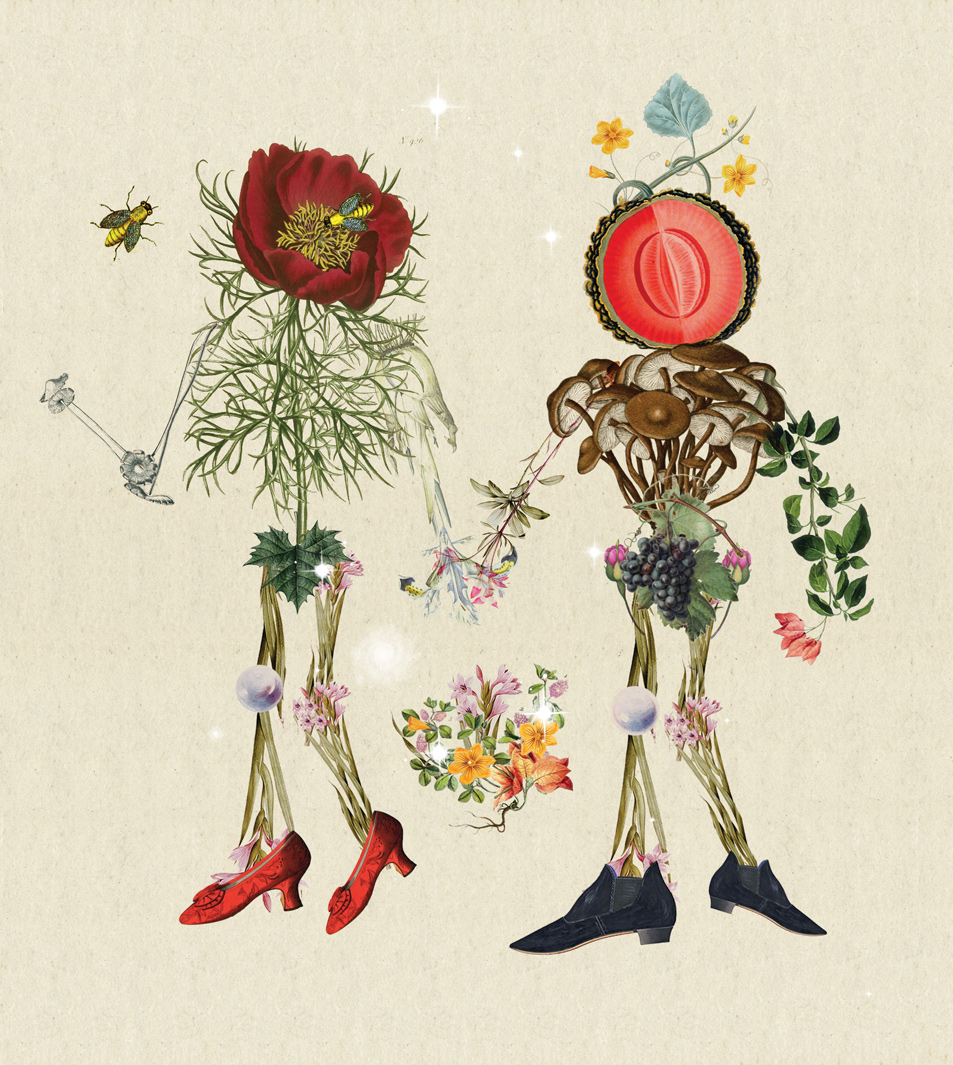
✍️Wendy Brown, Lic. Ac.
Dietary Basics According to
Traditional Chinese Medicine
Turning to traditional Chinese medicine and a Taoist concept of health and long life, one is moderate in every action and attentive to signals of the body and of nature. Eating when hungry and drinking when thirsty, we only ingest enough food and drink to satisfy actual needs that match activity. The dietary realm can be an exotic smorgasbord of delights and unknowns. Diet can also represent rote habit that lacks consideration beyond food cost and convenience. In the balanced view of traditional Chinese diet, neither extreme may be the better one when concerning nourishment. In oriental dietary practice, the overall properties and energetics of foods are always considered – rather than the individual constituents and compounds of nutrients. Foods have a direction they encourage Qi to move in and channels of affinity, as well as seasons and conditions for which they are most suited. The tastes that all foods and medicinals inherently possess is a basis for healing, whether by decoctions of healing herbs or by the preparation of the foods that we use in cooking.  The 5 Food Tastes determine, in large part, therapeutic effects.
The 5 Food Tastes determine, in large part, therapeutic effects.
Principles to be mindful of:
BITTER · Drains and dries; Traveling in the bones.
SWEET · Tonifies, harmonizes, moistens; Traveling in the flesh.
ACRID · Disperses and moves; Traveling in the Qi.
SALTY · Softens and purges; Traveling in the blood.
SOUR · Astringes and draws fluids inward; Traveling in sinews.
BLAND, NEUTRAL · Balancing; Leeching dampness and gently promoting the elimination of fluids through urination.
A basic ‘Middle Burner’ diet of warm, freshly prepared foods might consist of a plentiful variety of fresh, organic vegetables, cooked whole grains, some prepared beans/legumes, and protein from plant-based sources; let’s say, your hens’ eggs and occasional cheese from a neighbor’s goat. The gift of humane sources of certain animal products can be dietarily beneficial in supplementing an otherwise healthy diet. Quality fruits, nuts and seeds are beneficial but it is important to keep these foods in limited proportion to staple foods. Fruit smoothies, which, though they are delicious and are touted as all the rage in many circles, smoothies are unfriendly choices to accentuate the wellbeing of the Stomach’s digestive functioning according to traditional Chinese medical knowledge.
Quality fruits, nuts and seeds are beneficial but it is important to keep these foods in limited proportion to staple foods. Fruit smoothies, which, though they are delicious and are touted as all the rage in many circles, smoothies are unfriendly choices to accentuate the wellbeing of the Stomach’s digestive functioning according to traditional Chinese medical knowledge.
Sugar is poisonous to the bones and alternatives such as rice or barley malt, maple syrup, agave – assuming that agave is better than sugar is questionable for people living in cold or 4-season climate, or honey from your local hives is suitable in small amounts. [Even raw honey is a simple sugar, and I would recommend no commercial grade honey as it has been pasturized and therefore its enzymes have been denatured.]. Oils and fats, too, should be kept at a minimum, fiber at a high, miso and tempe are a ‘yes’, and left-overs are a definite ‘no’. Soups are usually a harmonizing feature of a meal, and a soup starting with a fresh vegetable stock can balance a meal of fried food due to its clarity and neutral thermal nature. Congee, which is a rice porridge, has amazing, nutritive effects on the Spleen and Stomach Qi, which are the roots of ‘Postnatal’ or ‘Acquired’ Qi.
Ginger is a splendid food, beverage, a catalytic heater in the preparation of food dishes, and is a prized medicinal substance. Clinical conditions that can benefit from ginger as a medicinal element are: atherosclerosis, bronchitis, elevated cholesterol, heart disease, blood clots and varicosities and weight loss to name only a few.
 When considering the stomach as a metaphorical soup pot, food in raw material form is catalyzed here to create nourishment by metabolic actions that require as well as produce warmth. It should be considered that the external heat source, as close to the origins of fire, will innately impart warmth to the conversion of food and promote the digestive process. Originally, the way humans cooked their food was over open flame, unequivocally. Over much time and innovation in approaches to cooking, such as current methods of the electric stove top and microwaving, fire has largely been replaced – although never improved upon. More than anything however, cooking fresh foods at home, no matter what the fuel source, is the strongest step toward maintaining good health.
When considering the stomach as a metaphorical soup pot, food in raw material form is catalyzed here to create nourishment by metabolic actions that require as well as produce warmth. It should be considered that the external heat source, as close to the origins of fire, will innately impart warmth to the conversion of food and promote the digestive process. Originally, the way humans cooked their food was over open flame, unequivocally. Over much time and innovation in approaches to cooking, such as current methods of the electric stove top and microwaving, fire has largely been replaced – although never improved upon. More than anything however, cooking fresh foods at home, no matter what the fuel source, is the strongest step toward maintaining good health.
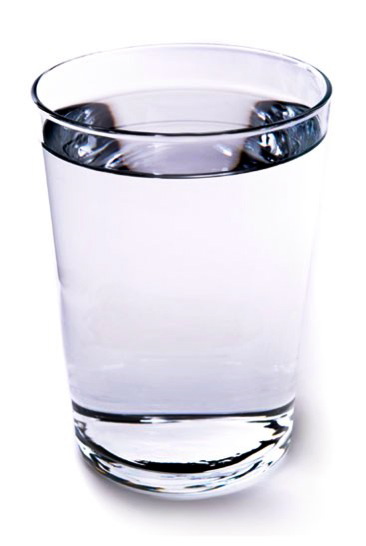
The advice regarding water intake one encounters is to drink only when thirsty or drink a few sips regularly throughout the day and a few sips during a meal. Consuming more than what is essential is considered a defiance of nature and signals of the body. There are obvious cases where higher fluid consumption is important, such as for people who are perspiring profusely due to exercise, hot weather, or resulting from a feverish disease, those who are losing fluids due to diarrhea, as well as one who tends to form kidney stones. By eating the suggested servings of fruit and vegetables per day, plentiful amounts of water are provided; many fruits and vegetables being more than 80% water in content.
Most yin quality foods in a healthy diet contain a significant quantity of water making it feasible to get the 2.5 liters a day without drinking copious amounts of water. However, the popular impression is that for good health one must drink 2.5 liters of water per day, when essentially, emphasis needs to be placed on consuming fresh fruits and vegetables, not on high volume water-intake. Health advisories recommend that sedentary women consume approximately 2,000 calories per day, for which the suggested 1 ml/calorie translates to only 2.0 liters of total water needed. Adding 1.9 liters of water from drinking glass after glass of water simply doubles such suggested intake. Drinking large volumes of water appears to be inconsistent with age-old wisdom inherent in moderation.
Green tea offers many health benefits that are validated by science, however, it is valuable to realize that drinking tea is something unto itself, to be done for its own sake. There is something in the nature of tea that leads us to quiet contemplation. Only in this way can one taste the mysteries of sunlight, wind and clouds, and minerals of the earth. Tea drinking engenders empathy with nature and kinship with one’s fellow beings. As a rule of thumb, white and twig teas are lowest in caffeine and the least drying to the fluids in the body. For people with a fatty constitution or after a greasy meal, pu erh would be the prime tea choice. Drink only organic teas and add no sweeteners.

Photo ©Elemental Changes
Daily supplementation with Chinese herb formulations is a potent catalyst toward a lifestyle of health and balance. Chinese herbal medicine is well-suited for everyday life. Even when healthy, the body as a whole is complimented by food quality and dietary combinations, and also by supplementation with herbal medicines.
Traditional Chinese medicine originally made no reference to pesticides and GMOs. Chemical preservatives and additive compounds have only fairly recently become factors to be recognized. ‘Poisoning,’ however, was described in the ancient Chinese categorizing of pathology. Bu Nei Bu Wai Yin, ‘not inside; not outside,’ differentiates the pathological factors derived of chemical poisoning – which is not to be confused with ‘food poisoning’ derived from wrecked food; food which is impure, spoiled or no longer fresh. All evidence suggests that eating chemically contaminated food is of detriment to long-term heath. This is why it is fully advisable to eat organic food and to use all products that are 100% ethical and free from chemical contamination. Let us be supplemented by food and our way of living, not contaminated by it. I think that eating vegan or ethically sourced vegetarian, even if only periodically, is a necessity, necessarily promoting a lightening on the digestive system rather than undertaking the extreme of depleting ‘cleanse’ regimens. My motto is to leave it off the menu if the source is tainted or is created from suffering or environmental degradation in some way. At this time we all must reconcile that we are each stewards of our health and stewards of this precious natural world.
All evidence suggests that eating chemically contaminated food is of detriment to long-term heath. This is why it is fully advisable to eat organic food and to use all products that are 100% ethical and free from chemical contamination. Let us be supplemented by food and our way of living, not contaminated by it. I think that eating vegan or ethically sourced vegetarian, even if only periodically, is a necessity, necessarily promoting a lightening on the digestive system rather than undertaking the extreme of depleting ‘cleanse’ regimens. My motto is to leave it off the menu if the source is tainted or is created from suffering or environmental degradation in some way. At this time we all must reconcile that we are each stewards of our health and stewards of this precious natural world.
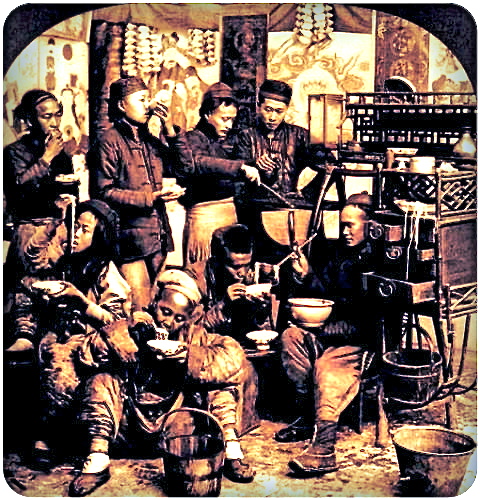 “The human organism and its nutritional needs have evolved over millions of years. But in the space of fifty years, we have created an entirely new diet which we justify by juggling numbers. In short, we have lost sight of the forest for the trees. Western science has spent so much time myopically examining the minutiae of life that it has lost sight of the broad generalizations which have been tested empirically for hundreds of generations – Age-old wisdom of people living traditionally in consonance with nature and with the laws of human development.” · Bob Flaws
“The human organism and its nutritional needs have evolved over millions of years. But in the space of fifty years, we have created an entirely new diet which we justify by juggling numbers. In short, we have lost sight of the forest for the trees. Western science has spent so much time myopically examining the minutiae of life that it has lost sight of the broad generalizations which have been tested empirically for hundreds of generations – Age-old wisdom of people living traditionally in consonance with nature and with the laws of human development.” · Bob Flaws
Food must address an individual’s health requirements. When eating is for luxury or convenience, diet can be sabotaging. “One who takes medicine and neglects diet wastes the skill of the physician.” ~ Chinese proverb
LET’S TALK.
![]()
Author’s footnote: In my opinion, meat is strictly regarded as medicine and animal by-products used with the highest respect and constervatism. My patient’s are free to eat and live to their calling. I respect everyone’s choices and work with people within the scope of their beliefs and the parameters of Chinese medicine.
Elemental Changes Oriental Medical Arts
Wendy Brown, Lic. Ac.
(828)281-4330
✍️Wendy Brown, Lic. Ac.
Spoken of medicinally in The Canon of Materia Medica 神農本草經 by the physician of mythical stature, Shen Nong who is said to have lived in about 2,800 B.C., proclaimed that Ju Hua improved senses of vision and hearing, alertness, clarity of thinking, promoted an energetic body, and increased longevity by slowing aging. It is now wide-spread knowledge that Ju Hua pacifies the Liver and therefore brightens vision, while also relieving fever and vanquishing toxins.
Jing Ming 精明 translates to mean the brightness of the eyes, but also the essence of mind and emotions that is reflected through the eyes. Oriental medicine acknowledges the relationship between tissues and organs. The clarity and brightness [Jing Ming] of the eyes is a reflection of the Liver which imbues the capacity for observing direction – ‘inner vision’ as well as of the material world around; distinguishing black and white and examining far and near.
Chinese herb brews containing Ju Hua benefit heat-toxin ailments from airborne pathogens such as dander and pollen, and since most people suffer some form of chronic imbalance, with the advancing and shifting of influences of springtime, people may also feel tired and weak. Chronic ailments flare easily under these conditions. Ju Hua encourages suppleness of the Liver, subdues ascending Yang and extinguished wind-heat that irritates the clarity of the eyes.

Spring is a time to be rid of stagnant Qi, to appreciate budding energy and beauty, and to follow principles for renewal of spirit~mind~body.
In springtime, drink chrysanthemum tea for health.
![]()
✍️Wendy Brown, Lic. Ac.
With chill in the air it is of particular importance to recognize our need for nourishing foods. Along with the cold, autumn brings the seasonal influence of dryness. Fall is a time of contraction; when our bodies and the natural surroundings tighten and contract to maintain warmth. Rather than salads, raw juices, and foods that are chilled, which appeal in summer and late summer seasons, in transitioning to fall it becomes essential that our food be nourishing, grounding, and that it secure warmth within.
 In fall we build our bodily stores for winter. Nuts are good food and whole grains such as millet and sweet rice are a must. Paramount in autumn are roasted root vegetables such as parsnip, sweet potato, beets, turnip, rutabaga, leeks, and carrots, which provide nourishing starches, vitamins, build protein-rich stores, and offer a balanced warming nature that is especially beneficial now. Winter squashes offer similar nourishment to that of root vegetables. Cooking methods of roasting, stewing, sautéing, and mashing offer plenty of versatility in the preparation of root vegetables and winter squashes. Ripened pears and persimmon are autumn’s perfect medicinal fruit offerings which nourish and replenish the yin of the lungs and stomach, bringing balance to the effects of seasonal dryness.
In fall we build our bodily stores for winter. Nuts are good food and whole grains such as millet and sweet rice are a must. Paramount in autumn are roasted root vegetables such as parsnip, sweet potato, beets, turnip, rutabaga, leeks, and carrots, which provide nourishing starches, vitamins, build protein-rich stores, and offer a balanced warming nature that is especially beneficial now. Winter squashes offer similar nourishment to that of root vegetables. Cooking methods of roasting, stewing, sautéing, and mashing offer plenty of versatility in the preparation of root vegetables and winter squashes. Ripened pears and persimmon are autumn’s perfect medicinal fruit offerings which nourish and replenish the yin of the lungs and stomach, bringing balance to the effects of seasonal dryness.
With there always being a fine line between nourishing and clogging the body, it is best to keep food portions reasonably light and to cook everything well now, and throughout the upcoming more inactive season of winter to therefore enhance digestion. Nourishment from food is the source of strengthening Wei Qi which wards externally pernicious wind invasion and prevents colds and flu from setting in. This is now the time to reduce coffee and other stimulant foods. In the phase of autumn, slowing down, building reserves, and grounding for the eventuality of winter, we remain in rhythm with the expectations of the season, and continue regardless of the excesses of the season, to cultivate good health and wisdom.
![]() With all best wishes for
With all best wishes for
good health and well being
‘One who takes medicine but neglects diet and a moderate way of life wastes the skill of the physician.’ 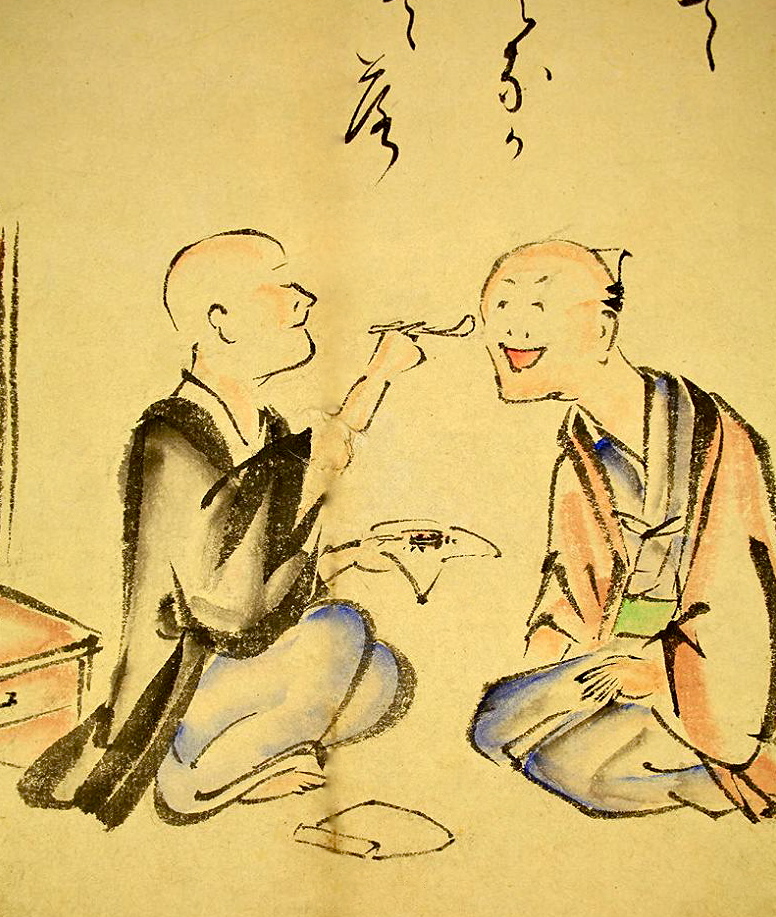 Your acupuncturist can treat you with acupuncture, prescribe herbal medicine and tell you how and when to take it, and from this you are very likely to feel better. S/he will undoubtedly help you to recognize what mental-emotional states and life-habits are having on you according to the wisdom inherent in oriental medicine. The principles of nurturing life known as Yǎng Shēng are discussions in the Chinese medical classics. The ways by which to nourish life through diet, breath, movement, and practices derived from cosmology and inner cultivation, display resonance with the elements of the natural world. These ways have long been observed and practiced by Taoists, Chinese physicians, and their patients alike, handed down in specific detail for millennia to reach your acupuncturist to share with you.
Your acupuncturist can treat you with acupuncture, prescribe herbal medicine and tell you how and when to take it, and from this you are very likely to feel better. S/he will undoubtedly help you to recognize what mental-emotional states and life-habits are having on you according to the wisdom inherent in oriental medicine. The principles of nurturing life known as Yǎng Shēng are discussions in the Chinese medical classics. The ways by which to nourish life through diet, breath, movement, and practices derived from cosmology and inner cultivation, display resonance with the elements of the natural world. These ways have long been observed and practiced by Taoists, Chinese physicians, and their patients alike, handed down in specific detail for millennia to reach your acupuncturist to share with you.

Here are basic parameters to help you consider the frequency of your treatments.
Please be ever-mindful when you leave the healing atmosphere of your treatment to put into practice the various recommended aspects of Yang Sheng that will facilitate your treatment related to diet, medicinal herbs, clothing, rest, exercise, and the like. By doing so, your life can begin to flow more smoothly in the manner that your treatments are intended. I remind my patients that herbal formulas in paricular can’t work if they aren’t taken, and one step further, they can’t be expected to work nearly as well if one waits days or a week to procure them or skips dosages. Without awareness and compliance, steps toward resolving a condition may only improve temporarily or not at all. Compliance is key as a patient and contributes to your healthy transformation. 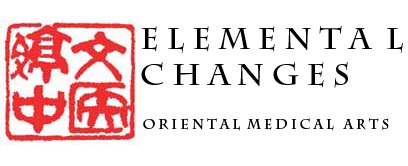
In aging, one must be so careful with everything lest it affect a host of health-related backlash. In treatment of our aging and elderly patients, emphasis of treatment pertains significantly to declining Kidney essence. However, the most serious diseases of aging are also caused by phlegm, blood stasis and internal wind. The pulse of the elderly patient read in Chinese medicine is frequently found to be hard, wiry and slippery. These three factors play a role in the pathologies of aging from which stroke, coronary heart disease, cancer, high cholesterol, diabetes, hypertension, as well as Alzheimer’s and Parkinson’s diseases are commonly occurring conditions.
✍️Wendy Brown, Lic. Ac.
The traditional art of pulse reading in the practice of Chinese medicine is an elusive form of conversation between patient and practitioner, and the method is a cornerstone of diagnosis and treatment. When a practitioner sets to feeling the pulses of a patient, what is conferred within the pulse is as practical as it is profound, and informs, guides, and refines the treatment.
 Each channel has a pulsation, a vibration, and qualities that imply the status of the channel and its network correspondences. But, more essentially, pulse rhythms, rates, and dichotomies are the measures of the individual’s life, and are ever-shifting with the multitudinous influences one is subjected to. Where else in the human form do we find that which measures a person’s past, present, and future than within the pulsations of sentience of one’s lifeblood? Each pulse speaks of intrinsic questions and the potential nature of the person.
Each channel has a pulsation, a vibration, and qualities that imply the status of the channel and its network correspondences. But, more essentially, pulse rhythms, rates, and dichotomies are the measures of the individual’s life, and are ever-shifting with the multitudinous influences one is subjected to. Where else in the human form do we find that which measures a person’s past, present, and future than within the pulsations of sentience of one’s lifeblood? Each pulse speaks of intrinsic questions and the potential nature of the person.
 • The first treatise on the pulse, titled the Mai Jing [Pulse Classic], gave the representation of the correspondences between the Zang-Fu, which formed the basis for most subsequent Chinese systems of pulse reading. -Written by Wang Shu-he [210-285 CE], who also stated: “The mechanisms of the pulse are fine and subtle, and the pulse images are difficult to differentiate.”
• The first treatise on the pulse, titled the Mai Jing [Pulse Classic], gave the representation of the correspondences between the Zang-Fu, which formed the basis for most subsequent Chinese systems of pulse reading. -Written by Wang Shu-he [210-285 CE], who also stated: “The mechanisms of the pulse are fine and subtle, and the pulse images are difficult to differentiate.”
• “The diseases in human beings fall into the four categories known as cold, heat, excess, and deficiency. The student of the pulse should take the floating, deep, slow, and rapid pulses as the reins in observing disease conditions. This is an unchanging principle!” -Zhu Dan-xi [Yuan Dynasty]
• “Chinese pulse diagnosis does not presuppose any exceptional, little-known, paranormal endowment or ability in the person applying it. All that is required is a solid grounding in its coherent theory and a trained and well-kept hand” -Manfred Porkert [20th Century]
• “Pulse diagnosis is an individually-developed art form, a blend of learning skills, intuition, a form of meditation, of being in touch simultaneously with the deepest aspects of oneself and another. It requires an ability to trust one’s senses and years of practice.” -Leon Hammer, M.D. [20th Century]
How All Disease Is a Matter of Heart-Spirit, According to Classical Chinese Medicine
The defining classics of Chinese medicine establish that it is the invisible forces of Shen [Heart-Spirit] and Qi [vital energy] that rule matter. While western medicine is rooted in the modern science of matter analysis, modern and ancient physicians of classical oriental medicine view nature, energy, and consciousness in the relationship of matter..
“Heaven comes first,” states the Ling Shu, “Earth is second.” Or in the more elaborate words of Liu Zhou, a 6th century philosopher: “If the Spirit is at peace, the Heart is in harmony; when the Heart is in harmony, the body is whole. If the Spirit becomes aggravated the Heart wavers, and when the Heart wavers the body becomes injured. If one seeks to heal the physical body, one must therefore first regulate the Spirit.”